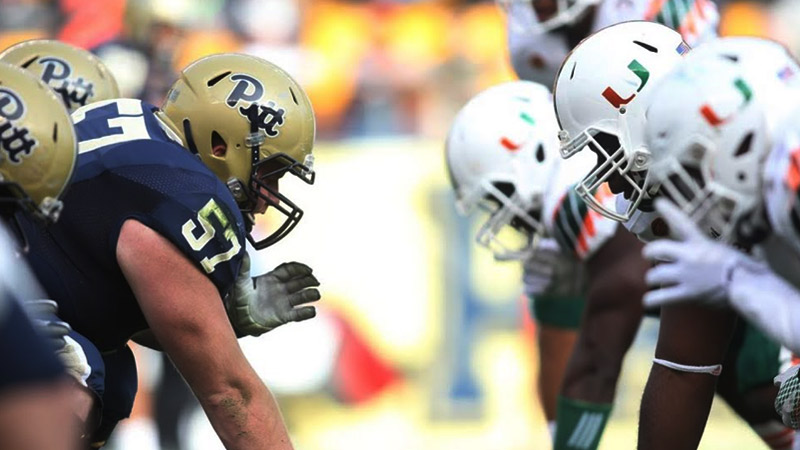Football is a game of strategy, where teams employ various defensive formations to counter the multifaceted offensive attacks they face.
Among these formations, the “Dallas 4-3 Defense” stands as a notable contender, celebrated for its versatility, balanced approach, and ability to disrupt opponents’ game plans.
In this comprehensive guide, we delve into the intricacies of the Dallas 4-3 Defense – breaking down its key features, exploring its benefits and drawbacks, and addressing common questions that arise when discussing this defensive strategy. Stay focused.
What Is Football Dallas 4-3 Defense?
The “Dallas 4-3 Defense” refers to a defensive scheme commonly associated with the Dallas Cowboys football team. It’s a formation within American football that utilizes four down linemen and three linebackers.
The numbers “4-3” indicate the number of defensive linemen and linebackers, respectively. Here’s a breakdown of the key positions and their roles in the Dallas 4-3 Defense:
Defensive Linemen (4)
Defensive Ends (DEs)
These players line up on the outside of the defensive line and are responsible for pressuring the quarterback, setting the edge against the run, and disrupting passing plays.
Defensive Tackles (DTs)
Positioned on the interior of the defensive line, these players work to stop the run and also provide interior pressure on passing plays.
Linebackers (3)
Middle Linebacker (MLB)
The middle linebacker is often the leader of the defense. They are responsible for making calls, reading the offense, and making tackles against both the run and the pass.
Weak-Side Linebacker (WLB)
This linebacker lines up on the weak side of the formation (opposite the tight end if there is one). They are often quicker and more athletic, excelling in coverage and pursuit.
Strong-Side Linebacker (SLB)
Positioned on the strong side of the formation (where the tight end lines up), this linebacker is usually more stout and strong, helping to defend against the run and occasionally dropping into coverage.
The Dallas 4-3 Defense aims to provide a balance between stopping the run and pressuring the quarterback. It’s important to note that football defensive schemes can vary depending on the team’s personnel, the coaching staff’s philosophy, and the specific game plan for each opponent.
Features of Dallas 4-3 Defense
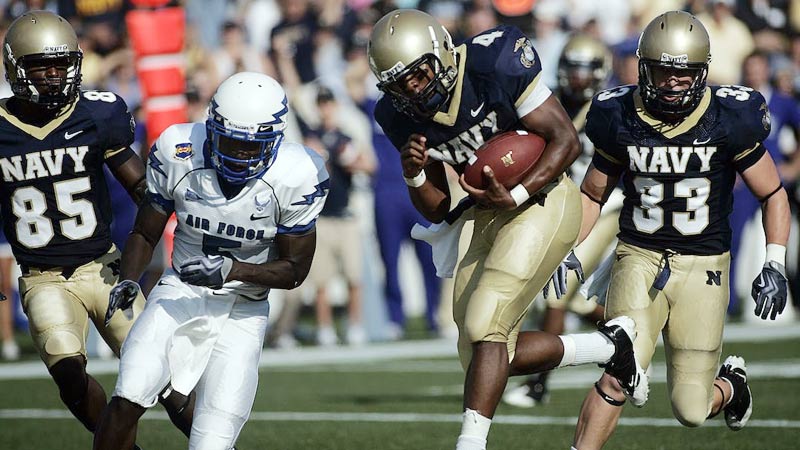
The Dallas 4-3 Defense, like any defensive scheme, is characterized by specific features and strategies that set it apart. Here are some common features of the Dallas 4-3 Defense:
Aggressive Pass Rush
The Dallas 4-3 Defense often emphasizes generating pressure on the quarterback. The defensive ends are typically expected to be strong pass rushers, using their speed and technique to disrupt the quarterback’s rhythm and force quick decisions.
Gap Control
The defensive linemen and linebackers work together to maintain gap integrity against the run. Each defender is responsible for a specific gap in the offensive line, aiming to prevent running backs from finding open lanes to exploit.
Speed at Linebacker
The scheme places importance on athletic and versatile linebackers, especially the weak-side linebacker (WLB) who is often tasked with coverage assignments against tight ends, running backs, and even slot receivers. These linebackers need to have the speed and agility to cover the ground quickly.
Flexibility in coverage
The Dallas 4-3 Defense typically incorporates zone coverage concepts in the secondary, allowing defensive backs to read the quarterback’s eyes and react to passes. This approach aims to limit big plays and force turnovers.
Disguised Blitzes
The scheme may involve creative and unexpected blitz packages. Safeties or linebackers might blitz from different angles to confuse the offensive line and disrupt the quarterback’s timing.
Strong Middle Linebacker
The middle linebacker (MLB) in the Dallas 4-3 Defense often acts as the quarterback of the defense. They make pre-snap adjustments, read the offense’s formation, and communicate coverage assignments to the rest of the defense.
Gap Penetration
Defensive linemen are encouraged to penetrate their assigned gaps to disrupt running plays in the backfield. This disruptive style of play can force runners to change direction and result in negative plays for the offense.
Versatile Defensive Linemen
The defensive linemen in this scheme are expected to be versatile, capable of both stopping the run and rushing the passer. This versatility makes it harder for offenses to predict the defense’s intentions on any given play.
Adaptability
While the base alignment is a 4-3, the scheme can adapt to various offensive formations and personnel groupings. This adaptability allows the defense to respond to different offensive strategies effectively.
Responsibilities of Football Dallas 4-3 Defense
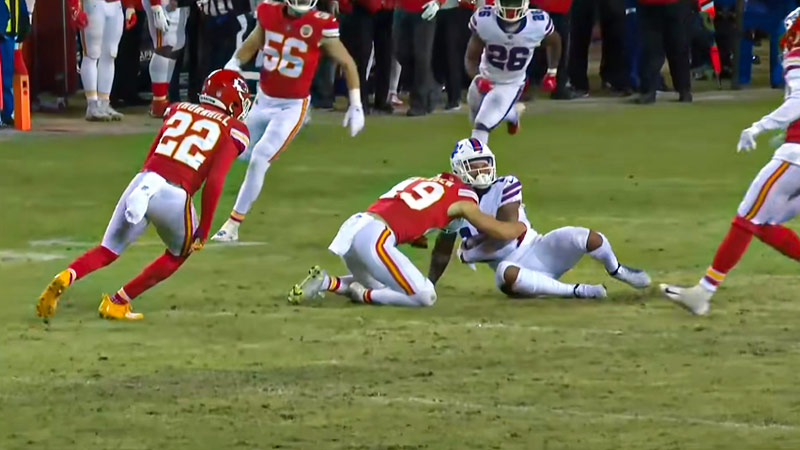
In the Dallas 4-3 Defense, each player has specific responsibilities and roles to fulfill in order to execute the scheme effectively.
While individual assignments can vary based on game plans, opponents, and specific player strengths, here are the general responsibilities for each position in the Dallas 4-3 Defense
Defensive Linemen
Defensive Ends (DEs)
- Pass Rush
DEs are tasked with pressuring the quarterback. They must use their speed, agility, and technique to get around offensive tackles and disrupt the passing game.
- Setting the Edge
Against the run, DEs need to maintain outside containment, preventing running backs from bouncing to the outside. This helps funnel the ball carrier toward the middle of the defense.
Defensive Tackles (DTs)
- Run Defense
DTs are responsible for stopping interior runs and clogging running lanes. They need to shed blocks and make tackles near the line of scrimmage.
- Interior Pressure
While their primary role is run defense, DTs can also generate interior pressure on passing plays, collapsing the pocket and forcing the quarterback to make quick decisions.
Linebackers
Middle Linebacker (MLB)
- Play Recognition
The MLB reads the offense’s formation, identifies play tendencies, and adjusts the defense accordingly.
- Tackling
The MLB is a key tackler against the run, often filling gaps to stop ball carriers.
- Zone Coverage
In pass defense, the MLB drops into zone coverage, often covering the middle of the field. They read the quarterback’s eyes and react to passes.
Weak-Side Linebacker (WLB)
- Coverage
The WLB is often assigned coverage responsibilities against running backs, tight ends, and slot receivers. They need the speed and agility to cover these targets effectively.
- Pursuit
WLBs are quick and agile, allowing them to chase down plays from the backside and make tackles in space.
Strong-Side Linebacker (SLB)
- Run Support
The SLB is usually responsible for setting the edge against outside runs, funneling ball carriers back toward the middle of the defense.
- Coverage
While SLBs may not have as extensive coverage duties as the WLB, they still need to cover tight ends and contribute to zone coverage schemes.
Defensive Backs
Cornerbacks (CBs)
- Man-to-Man Coverage
CBs often play man-to-man coverage against opposing wide receivers, trying to disrupt routes and prevent receptions.
- Zone Coverage
In zone schemes, CBs cover specific areas of the field, reading the quarterback and reacting to passes.
Safeties (SS and FS)
- Deep Coverage
Free safeties (FS) are typically responsible for deep coverage, helping prevent long passes. Strong safeties (SS) are more involved in run support and underneath coverage.
- Run Support
Safeties, especially SS, need to quickly diagnose run plays and provide support in stopping ball carriers.
How to Practice Dallas 4-3 Defense?
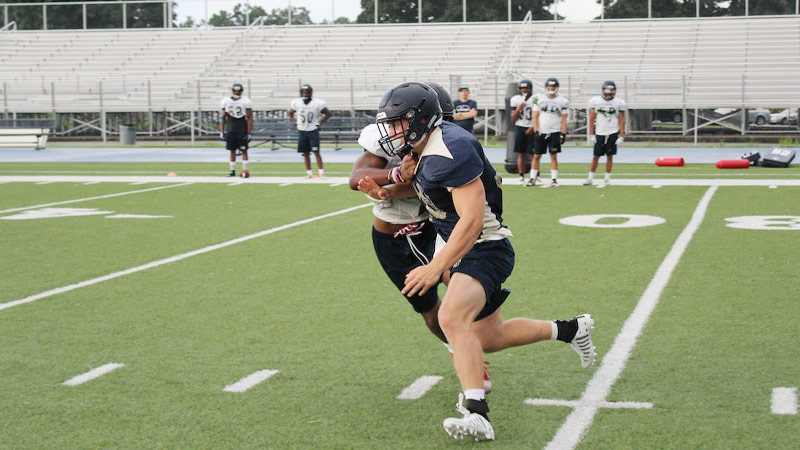
Practicing the Dallas 4-3 Defense, or any defensive scheme in football, requires a structured approach to help players understand their roles, responsibilities, and how to work together as a cohesive unit. Here’s a step-by-step guide on how to practice the Dallas 4-3 Defense:
Teach the Basics
Start by thoroughly explaining the foundational principles of the Dallas 4-3 Defense. This includes the roles and responsibilities of each position, gap assignments, coverage concepts, and overall defensive philosophy.
Individual Position Drills
Design specific drills for each position group to work on their fundamental skills and techniques. These drills should focus on pass rushing, tackling, coverage skills, gap control, and recognition of offensive plays.
Position Meetings
Hold regular meetings with each position group to review film, discuss opponent tendencies, and go over game plans. This is an opportunity to analyze mistakes and highlight areas for improvement.
Group Drills
Combine position groups to simulate game-like scenarios. Work on run fits, pass rush techniques, and coverage responsibilities as they relate to the 4-3 Defense. Incorporate controlled scrimmages to practice full-speed reactions.
Communication Exercises
Emphasize communication among players, particularly in the secondary and between linebackers and defensive backs. Use drills that encourage verbal and non-verbal communication to ensure everyone is on the same page during plays.
Read and React Drills
Set up situations where defenders have to quickly read offensive cues and react accordingly. This could involve recognizing run or pass plays, identifying blocking schemes and making split-second decisions.
Team Drills
Execute team drills that replicate in-game scenarios. Use 7-on-7 drills for pass coverage, 9-on-7 or 11-on-11 drills for run defense, and 11-on-11 scrimmage situations to practice overall defensive cohesion.
Scrimmage Against the Offense
Hold full-team scrimmages against the offense to apply the Dallas 4-3 Defense in a game-like environment. This helps players understand how their roles fit within the scheme and how they need to adjust based on offensive actions.
Film Study
Review game footage with the players to analyze their performance. Highlight both successful plays and areas that need improvement. Use film sessions to reinforce the principles of the Dallas 4-3 Defense.
Adjust Based on Opponents
Tailor practice sessions to the upcoming opponent’s offensive tendencies. Focus on defending their strengths and exploiting weaknesses based on the defensive scheme.
Live Game Repetitions
As the season progresses, incorporate more live-game repetitions during practice to increase the players’ comfort level with executing the Dallas 4-3 Defense in actual game situations.
Feedback and Adjustments
Continuously gather feedback from players and coaching staff. Be open to making adjustments to drills, strategies, and assignments based on what’s working and what isn’t.
Benefits of Dallas 4-3 Defense

The Dallas 4-3 Defense, like any defensive scheme in football, offers several potential benefits when executed effectively.
While the success of the defense depends on factors such as personnel, coaching, and game planning, here are some benefits associated with the Dallas 4-3 Defense:
Versatility
The 4-3 Defense is flexible and adaptable to different offensive formations and personnel groupings. It can adjust to various offensive strategies and maintain effectiveness against both run and pass plays.
Balanced Approach
The scheme aims to strike a balance between stopping the run and pressuring the quarterback. With four down linemen, it provides a solid foundation for run defense while still having the ability to generate a pass rush.
Strong Pass Rush
The defensive ends in the Dallas 4-3 Defense are often tasked with generating a strong pass rush. This can disrupt the timing of opposing quarterbacks, leading to hurried throws and potential turnovers.
Pressure from Multiple Positions
The scheme incorporates blitz packages and stunts that can create pressure from different areas of the field. This can confuse offensive linemen and quarterbacks, leading to more favorable defensive situations.
Gap Control
The 4-3 Defense emphasizes gap control, where each defender is responsible for a specific gap in the offensive line. This can help prevent big runs and force ball carriers to change direction, leading to negative plays for the offense.
Coverage Flexibility
The scheme employs a mix of man-to-man and zone coverage concepts in the secondary. This allows the defense to adjust its coverage based on the strengths and weaknesses of the opposing offense.
Interior Disruption
The defensive tackles in the 4-3 Defense can provide interior pressure on passing plays. This can collapse the pocket, making it difficult for quarterbacks to step up and deliver accurate throws.
Athletic Linebackers
The linebacker positions in the scheme often require athleticism, speed, and versatility. Linebackers need to cover running backs, tight ends, and slot receivers in addition to fulfilling their run-stopping duties.
Run Defending Strength
The combination of a strong front four and active linebackers can create a stout run defense, making it challenging for opposing teams to establish a consistent rushing attack.
Simplicity and Cohesion
The 4-3 Defense can be simpler to implement and teach compared to more complex defensive schemes. This can lead to better cohesion among defenders, reducing the risk of breakdowns.
Strong Middle Linebacker Leadership
The middle linebacker often acts as the quarterback of the defense, making pre-snap adjustments and ensuring that the entire defense is aligned correctly.
Potential for Turnovers
By disrupting the timing of offensive plays and pressuring quarterbacks, the 4-3 Defense can create opportunities for interceptions, fumbles, and other turnovers.
Drawbacks of Dallas 4-3 Defense
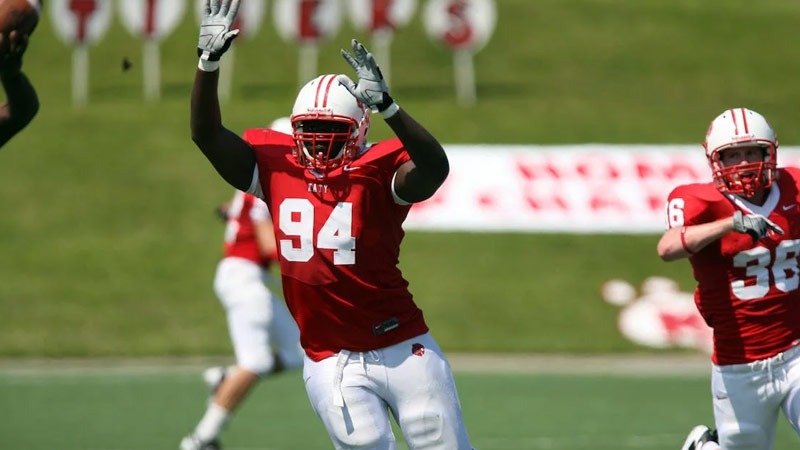
While the Dallas 4-3 Defense has its benefits, it also comes with certain drawbacks and challenges. It’s important to consider both the positive and negative aspects of any defensive scheme. Here are some potential drawbacks of the Dallas 4-3 Defense:
Vulnerability to Spread Offenses
The 4-3 Defense can sometimes struggle against spread offenses that utilize multiple receivers and quick passing plays. This can put stress on the secondary and create mismatches in coverage.
Mismatch Against Athletic Tight Ends
Athletic and versatile tight ends can pose challenges for the 4-3 Defense, especially in man-to-man coverage situations. Strong safeties and linebackers may have difficulty covering these dynamic targets.
Passing Attack Exploitation
Opponents with strong passing attacks and accurate quarterbacks might find success against the 4-3 Defense by exploiting soft spots in coverage or quickly releasing the ball to avoid the pass rush.
Lack of Pass Rush Depth
The pass rush primarily relies on the defensive ends, and if they are neutralized or unable to generate pressure, the defense might struggle to disrupt the quarterback’s rhythm.
Run Defense Gaps
If defenders fail to maintain gap discipline or if offensive linemen are able to open running lanes, the defense can be vulnerable to big rushing plays.
Limited Blitz Variability
Compared to more complex defensive schemes, the 4-3 Defense might have fewer options for creative and unexpected blitz packages, which could make it predictable in certain situations.
Personnel Limitations
The success of the 4-3 Defense can be influenced by the availability of suitable personnel. If the team lacks athletic linebackers or pass-rushing defensive ends, the scheme’s effectiveness could be compromised.
Coverage Challenges in the Middle
Depending on the strengths and weaknesses of the defensive backs and linebackers, the middle of the field could become a vulnerable area in terms of both run support and pass coverage.
Adaptation to Evolving Offenses
As offenses evolve and incorporate new strategies, the 4-3 Defense might need to continuously adapt to counter these changes. Failing to do so could lead to exploitation by opponents.
Complexity in Pass Coverage
Effective zone and man-to-man coverage schemes require precise communication and coordination among defenders. Any breakdown in coverage assignments can lead to big plays for the offense.
FAQs
What is the Dallas 4-3 Defense?
The Dallas 4-3 Defense is a defensive scheme utilized in American football, characterized by its formation of four defensive linemen and three linebackers. It aims to strike a balance between stopping the run and pressuring the quarterback, emphasizing gap control and coverage flexibility.
What are the responsibilities of players in the Dallas 4-3 Defense?
Each position in the Dallas 4-3 Defense has specific responsibilities. Defensive linemen focus on pass rush and run defense, linebackers handle both coverage and run support, and defensive backs play a key role in coverage and support against the pass.
What are the benefits of the Dallas 4-3 Defense?
The scheme offers versatility, a strong pass rush, balanced run defense, and adaptability to various offensive formations. It also features athletic linebackers, the potential for turnovers, and simplified communication due to its structure.
What are the drawbacks of the Dallas 4-3 Defense?
The scheme might struggle against spread offenses, athletic tight ends, and teams with strong passing attacks. It can also face challenges with personnel limitations, adapting to evolving offenses, and handling mobile quarterbacks.
How can teams practice and implement the Dallas 4-3 Defense effectively?
To practice the Dallas 4-3 Defense, teams should focus on teaching the basics, conducting individual position drills, holding position meetings, practicing communication exercises, and simulating game scenarios through group drills and scrimmages.
Wrapping Up
The Dallas 4-3 Defense is a dynamic defensive strategy that requires a balance of coaching expertise, skilled players, and meticulous preparation.
Its ability to adapt to different offensive schemes, generate pressure, and control gaps in the run game makes it a valuable tool in a team’s defensive playbook.
By understanding its features, benefits, and potential drawbacks, coaches and players can work together to maximize the effectiveness of the Dallas 4-3 Defense on the football field. Thank you so much.

